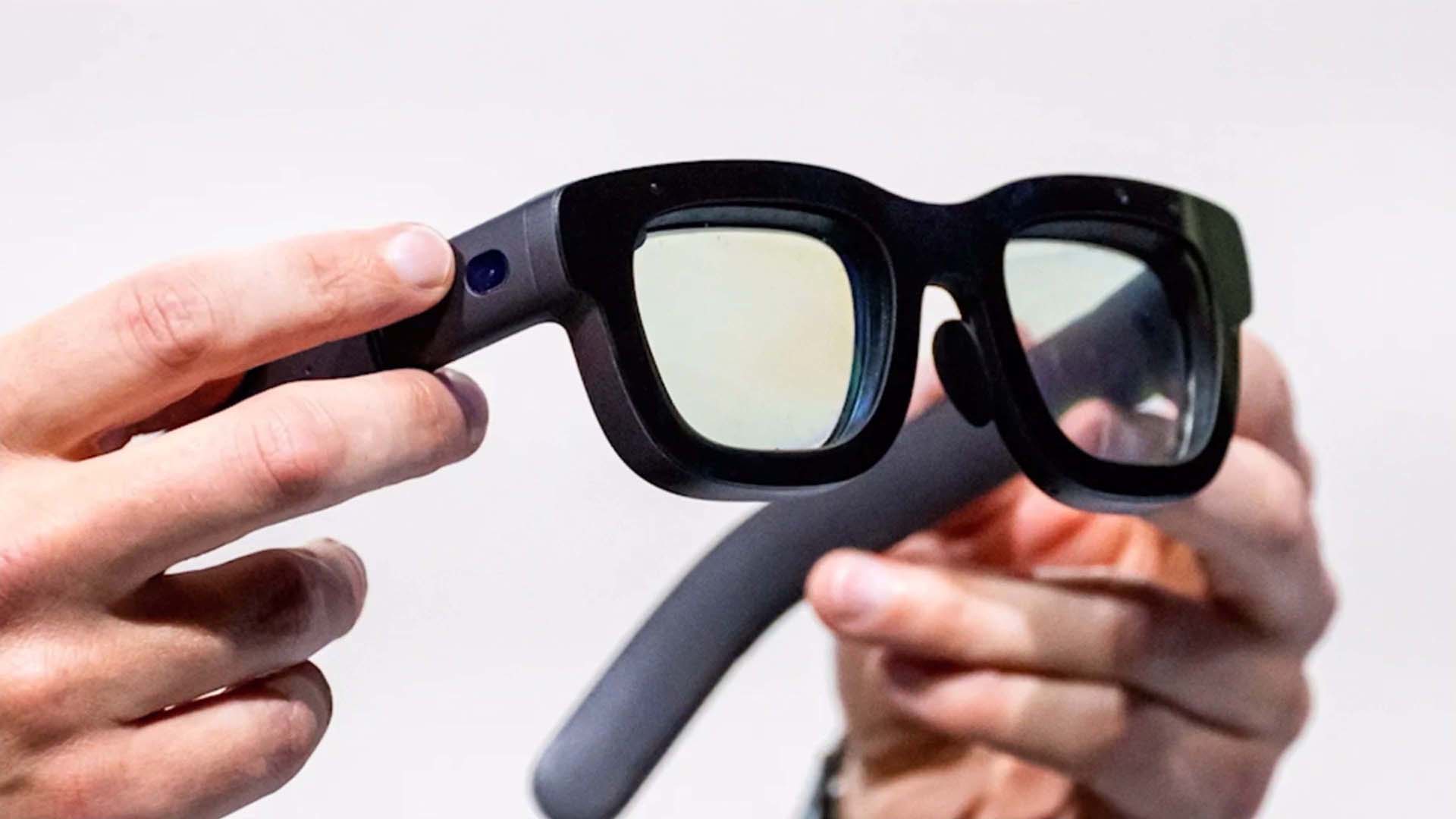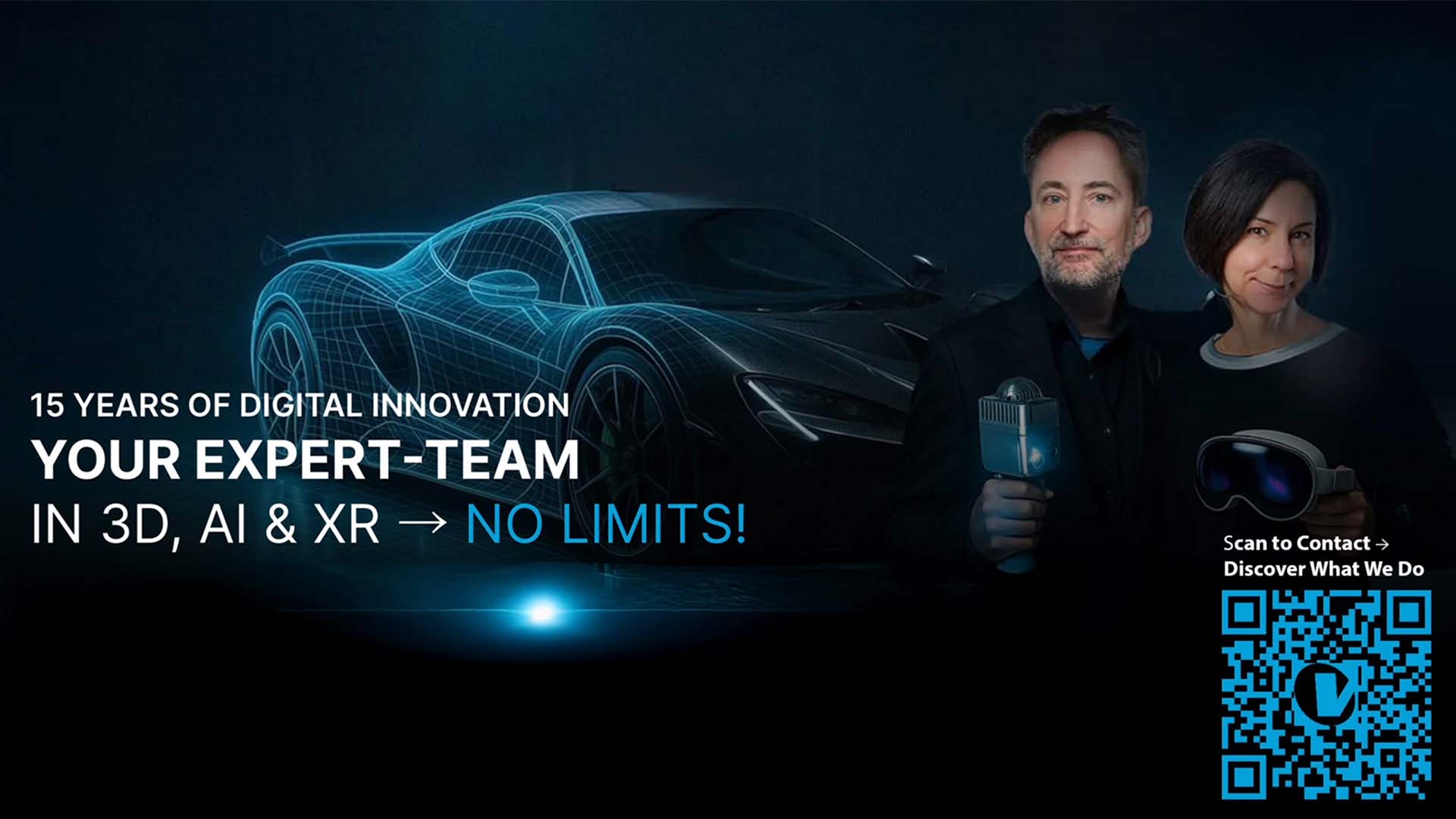The wrist as a control hub: A novel armband detects electrical signals from the muscles, enabling intuitive control of mixed reality applications and connected devices like cars.
Image: XR Stager / AI-generated visual
Armbands as Interfaces: How EMG Technology Opens Up New Interaction Pathways
Imagine controlling digital devices with just a subtle twitch of your fingers – no mouse, no touchscreen, no voice input. That is the goal of Meta’s EMG wristband concept. But how realistic is this vision?
At the XR Stager NewsRoom, we examine the topic from scientific, technological, and design perspectives: How does the technology work? What real-world applications are possible? And how far does the vision of EMG-based control go – from AR glasses to smart home interaction?

Making muscle activity visible: The armband detects subtle electrical signals from the forearm and translates them into digital control impulses – for XR interactions or robotic systems.
Image: Meta / Instagram @meta
Digital Control via Muscle Activity
EMG stands for electromyography – a method for detecting muscle activity through electrical signals. These signals occur even before a visible movement impulse is executed. This is exactly what the Meta wristband utilizes: It detects hand movements via neural activation even before the finger actually moves.

From brain to fingertip: Muscle interfaces use the electrical signals along the nervous system to recognize intentions directly on the body – without additional environmental sensors.
Image: AI-generated by the XR Stager Team
- Detection of neural signals directly at the wrist
- High precision through machine learning
- Recognition of gestures like scrolling, tapping, or clicking
- No physical movement required
- Control of digital content without visual markers
Unlike traditional gesture controls that need to be visually tracked, the EMG wristband starts at the electrical intent to control. This means more privacy, less dependency on cameras – and a completely new approach to human-machine interaction.
This control method is not only faster but also works in situations where other systems fail – such as in low-light conditions or while on the move.
Meta and the “Orion” Project
The EMG wristband is part of a long-term research project at Meta, internally known as “Orion.” The goal is to develop AR glasses that are suitable for everyday use – with the most intuitive control possible.

The AR glasses “Meta Orion”: Part of a long-term research project on everyday-suitable, gesture-controlled augmented reality technology.
Image source: Meta / Project documentation
- Orion as a vision for everyday-ready AR wearables
- Invisible control as a central element
- Integration of EMG into a seamless system design
- Distinction from voice control and camera tracking
- Focus on discreet and private interaction
Unlike VR headsets, which isolate visually, Orion is meant to look like normal glasses – enhanced by an almost invisible wrist interface. The idea behind it: No one sees you’re interacting with digital content – and you don’t need to show it.
This offers exciting advantages, especially for professional contexts like meetings or mobile work environments: discreet interaction without attracting attention.
Applications: From XR to the Real World
The applications of EMG technology go far beyond XR. In theory, such an armband could also be used to control everyday devices – TVs, cars, smart homes, or medical systems.

Neural connection: The human hand as an interface – visually interpreted along the nervous system between brain and movement.
Image: AI-generated by the XR Stager Team
- XR interfaces: control of augmented and mixed reality environments
- Smart devices: operation of TVs, speakers, and wearables
- Assistive technology for people with disabilities
- Gaming without controllers or camera tracking
- Integration into industrial human-machine systems
Especially exciting: people with physical impairments could benefit from such technology, as minimal muscle activity is enough to perform actions. At the same time, the gaming sector could be revolutionized – with immersive gameplay without a gamepad.
For industry, new options arise for machine control, remote work, or access to complex control interfaces in real time.
From Research to Reality – A Technological Perspective
The Meta wristband is not a finished product but a research prototype. However, the underlying technology is far from new. As early as 2014, the company Thalmic Labs presented a similar concept called the “Myo Armband” – but with much lower resolution and practicality.

Mixed reality in everyday life: Research projects like Meta’s “Orion” show how intuitive control could be integrated into market-ready XR glasses in the future.
Image: AI-generated by the XR Stager Team
- EMG as a medically established technology for decades
- Earlier commercial attempts like the Myo Armband
- Current advances through AI and more precise sensors
- Challenges: calibration, latency, misinterpretations
- Opportunities through miniaturization and deep learning
Only today does the combination of machine learning, edge processing, and ergonomic design make a real difference: The systems learn in a personalized way and in real time. Still, the question remains: How reliable is the recognition really – especially during complex everyday interactions?
A technical interface that knows what the user wants before they act offers both potential and risk. Algorithms could misinterpret decisions or trigger unintended actions. A conscious design ethic is therefore a key component of this technology.
An Interface Between the Real and Virtual World
What does it mean when our hand becomes an interface – independent of keyboard, mouse, or screen? The EMG armband is a potential stepping stone toward a hybrid control world where real and digital content merge.

The EMG armband detects the slightest movements and intentions – the hand becomes the interface for hybrid control systems.
Image source: Meta (Screenshot)
- The hand as an interface for both worlds
- Potential for immersive productivity
- Discreet control with maximum freedom of movement
- Possible integration with AI systems (e.g., co-pilots)
- New UX paradigms through intention instead of action
In a possible future, the wristband could disappear completely – replaced by implantable sensors or high-resolution camera AI. But for now, it offers a practical, invisible interface for transitioning to spatial interfaces.
This vision is not only evident in Meta’s concept but also in startups and research institutions around the world: control through minimal gestures, personalized through machine learning – and ready to use anytime, whether virtual or real.
Video Insight: Control Through Intention
The following video was originally published by Meta on Instagram and shows the current state of research.
© Meta | Source: Instagram “Behind the Tech” / Meta Reality Labs
VoiceOver and journalistic companion texts: Ulrich Buckenlei
Talk to Our Experts About Your Interface Project
Are you developing immersive applications, evaluating novel control concepts, or looking for a UX approach beyond mouse and touchscreen? Then talk to our expert team. Together, we analyze the potential of technologies like EMG armbands, gesture-based interfaces, or AI-supported intent detection.

Designing new interfaces together – with the Visoric expert team for 3D, AI, and XR.
Image source: Visoric / XR Stager
- UX workshops – Understanding future interaction paradigms
- Prototyping – Testing ideas with real interfaces
- Technology consulting – Selection and integration of suitable tools
Our specialists in XR, AI, and interface design provide hands-on and strategic support – whether you’re developing new products or integrating smart interfaces into existing systems.
Contact us now – and shape the next chapter of intuitive interaction with us.
Contact Us:
Email: info@xrstager.com
Phone: +49 89 21552678
Contact Persons:
Ulrich Buckenlei (Creative Director)
Mobil +49 152 53532871
Mail: ulrich.buckenlei@xrstager.com
Nataliya Daniltseva (Projekt Manager)
Mobil + 49 176 72805705
Mail: nataliya.daniltseva@xrstager.com
Address:
VISORIC GmbH
Bayerstraße 13
D-80335 Munich


